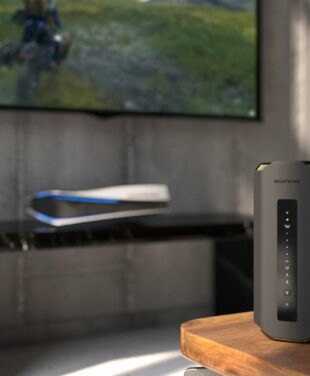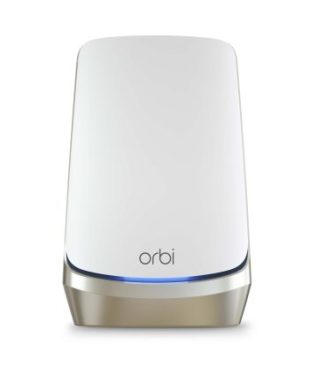WiFi 7 isn't just a step up from its predecessors; it's a quantum leap forward. Boasting wider channel bandwidth, faster speeds, and low latency courtesy of cutting-edge WiFi technology, the WiFi 7 standard (IEEE 802.11be) is a game changer that is sure to revolutionise our online interactions.
IN THIS ARTICLE
Understanding the Journey to WiFi 7
WiFi, also known as wireless fidelity, explains a particular method of connecting to the internet. Many new WiFi standard services and protocols have been introduced since the turn of the millennium, each offering improvements on the previous standard. The latest WiFi 7 (802.11be) standard offers unparalleled advancements for blazing-fast, seamless device connections for a superior user experience. But how did we get to this point?
The term WiFi was trademarked in 1999 by a group called the WiFi Alliance. Another group, The Institute of Electrical and Electronics Engineers (IEEE), founded in 1963, oversees industry standards and protocols, including the naming of WiFi standards. The first WiFi standard for use in computer and communications technology was called IEEE 802.11. The 802 number comes from the committee in charge of wireless network development, and the 11 refers to a working group within the 802 committee. The IEEE updates the 802.11 WiFi standard periodically. Examples include IEEE 802.11a and IEEE 802.11b.
Client devices such as routers, Windows laptops, Apple and Android smartphones, and smart home applications connect to the internet using WiFi standards. Each new standard brings faster internet, better WiFi connections, and increased networking opportunities. The latest WiFi 7 standard, also known as Extremely High Throughput (EHT) offers a range of new functions that dramatically improve the online experience.
A New Way of Naming WiFi Standards
The official IEEE WiFi naming protocols can be confusing for the average internet user. To make identifying WiFi standards easier, a new naming system was introduced. For example, IEEE 802.11a is now also called WiFi 1, and IEEE 802.11b is WiFi 2. The latest WiFi technology standard (IEEE 802.11be) is the 7th generation, so it is known as WiFi 7. Some earlier WiFi standards are now obsolete, while others are being progressively phased out. Following is a brief timeline of some of the better-known WiFi standards that have been used for computing and networking.
WiFi 1 (IEEE 802.11a) -1997: The original standard, IEEE 802.11a, was released in 1997 and ratified in 1999. WiFi 1 is now obsolete. This standard used microwave transmission and specified two net bit rates of 1 or 2 Mbps.
WiFi 2 (IEEE 802.11b) – 1999: This standard uses many of the same technologies as the original standard. Devices using WiFi 2 experience interference from devices operating in the 2.4 GHZ band, such as microwave ovens and Bluetooth devices.
WiFi 3 (IEEE 802.11g) – 2003: This standard works in the 2.4 GHz band (like 802.11b) and uses the same orthogonal frequency division multiple access (OFDMA) scheme as 802.11a. WiFi 3 has a maximum bit rate of 54 Mbps.
WiFi 4 (IEEE 802.11n) – 2009: This was a major step forward, including the addition of multiple-input multiple-output antennas. WiFi 4 operates on both the 2.4 GHz and 5GHz bands and has data rate transfer capability of up to 600 Mbps.
WiFi 5 (IEEE 802.11ac) – 2013: Improvements included wider 5GHz band channels (80 or 160 MHz versus 40 MHz), 8 spatial streams, quadrature amplitude modulation (up to 256 QAM), and Multi-User MIMO (MU-MIMO).
WiFi 6/6E (IEEE 802.11ax) – 2020: This standard introduced users to the 6 GHz band alongside the 2.4 GHz and 5 GHz bands. WiFi 6 and WiFi 6E have more efficient radio frequency usage to support emerging applications.
WiFi 7 (IEEE 802.11be) – 2023: This latest WiFi standard delivers blazing-fast data rates as high as 40 Gbps, operating in the 2.4 GHz, 5 GHz, and 6 GHz frequency bands. More state-of-the-art technologies were introduced.
WiFi 7 is superfast, offering tri-band and quad-band multi-gigabit speeds for high-definition video streamers, competitive gamers, virtual reality, the Metaverse, industrial and commercial applications, and a huge array of smart home Internet of Things (IoT) technologies.
The Speeds of WiFi 7
When it comes to maximum speeds, WiFi 7 is a game-changer that comprehensively eclipses the capabilities of WiFi 6. For users, this translates to smoother streaming, more channel width, faster downloads, and device compatibility for a more fluid and responsive online experience. Here are some notable upgrades worth knowing about if you are considering an upgrade to WiFi 7.
Wider Channels
WiFi bands can be divided into channels, allowing multiple devices to simultaneously connect to the internet. The 2.4 GHz band has 11 channels of 20 MHz each. The 5 GHz band has 45 channels that can be combined to create 40 MHz or 80 MHz channels. The 6 GHz band supports 60 channels. With WiFi 6E, these channels can be as wide as 160 MHz. WiFi 7 supports channels that are up to 320MHz wide. In other words, WiFi 7 can potentially transmit double the amount of data as WiFi 6E. This capability alone is enough to make WiFi 7 the right choice for a WiFi system upgrade.
Higher QAM
Quadrature Amplitude Modulation (QAM) is used to transmit and receive data. Higher QAM allows more information to be packed in. WiFi 7 supports 4K QAM, WiFi 6 supports 1024 QAM, and WiFi 5 is limited to 256 QAM. All technologies considered, WiFi 7 4096-QAM translates to a 20 percent increase in peak performance compared to WiFi 6.
Multi-Link Operation (MLO)
Another exciting WiFi 7 advance is Multi-Link Operation (MLO). Previous WiFi standards could only use single-link (band) operation. For example, a tri-band WiFi 6E router chooses the most suitable connection from the 2.4 GHz, 5 GHz, or 6 GHz band. WiFi 7 MLO, on the other hand, can combine several frequencies across different bands into a single connection. It can also switch between bands to establish the best available connection.
Preamble Puncturing
This WiFi 7 feature allows WiFi devices to block off a portion of the channel if it is being affected by interference. This results in better connections and a more seamless user experience. Preamble puncturing avoids narrower channels that are being used by other devices.
Target Wake Time
This new WiFi 7 feature allows WiFi routers to reserve bandwidth for specific devices and applications. For example, you can reserve bandwidth for work video conferencing appointments, online gaming, data-hungry virtual reality, or smart home applications that only need to wake up and operate periodically.
WiFi 7 is backward compatible. Your older legacy devices will still function as normal. However, the full benefits and max speeds of WiFi 7 will be appreciated over time as you upgrade your computers and other devices to WiFi 7.
Factors Influencing WiFi 7 Performance
WiFi 7 represents huge improvements in speed and efficiency compared to earlier WiFi standards. WiFi 7 provides streamlined connectivity for numerous devices being used concurrently. WiFi 7 minimises interference, particularly in high-density connection areas. Key factors driving WiFi 7’s performance capabilities include higher frequency modulation in the 6GHz band, double the number of channels, and the Multi-Link Operation (MLO) utilising the 2.4GHz, 5GHz, and 6GHz bands.
WiFi 7 is gaining traction, with major manufacturers and organisations gearing up to accommodate WiFi 7-enabled devices. Widespread WiFi 7 uptake has begun for routers, access points, and client devices. WiFi 7’s potential extends to replacing wired connections for video production, high-definition streaming, medical monitoring, industrial applications, high-performance gaming, and network infrastructure.
For small businesses and households in Australia with few internet users, the impact of WiFi 7 may not be immediately significant. However, as more devices with WiFi 7 support enter the market, the case for widespread adoption will become increasingly compelling. WiFi 7’s theoretical peak data rate of 46 Gbps is almost four times faster than WiFi 6/6E and five times faster than WiFi 5.
However, speed isn’t the only performance factor worth knowing about. The performance of WiFi 7 is also influenced by device capabilities, network congestion, and environmental factors. To fully leverage amazing WiFi 7 power, advanced hardware is essential.
Real-World Applications of WiFi 7 Speeds
The future is now with WiFi 7. You can now stream ultra-high-definition content with zero lag and manage a network of high-bandwidth devices seamlessly. WiFi 7 transforms the digital experience from the ordinary to the extraordinary. If you have lots of WiFi-connected devices, or multiple WiFi networks to manage, a switch to a WiFi 7 router should dramatically improve your connected experience.
WiFi 7 will accelerate emerging use cases such as low-latency extended reality (XR), cloud-based gaming, 8K video streaming, and video conferencing. WiFi 7 is advisable for anyone who wants to future-proof their networking system.
Preparing for WiFi 7
WiFi 7 is here and it’s time to consider upgrading your network. Opting for NETGEAR’s cutting-edge WiFi 7 products such as the Orbi 970 whole-home mesh WiFi systems will ensure you’re ready to harness the full potential of WiFi 7. According to the WiFi Alliance, WiFi 7 supports a maximum throughput of at least 30 Gbps (theoretically 40+ Gbps) to increase performance for expanded use cases.
WiFi 7 enhancements support reduced latency for time-sensitive networking improvements for augmented reality (AR), virtual reality (VR), 4K and 8K video streaming, the Metaverse, cloud gaming, automotive innovations, mission-critical applications, and industrial technologies. These are exciting WiFi 7 times.
NETGEAR and WiFi 7
NETGEAR has been a leader in networking technology since the 1990s and remains at the forefront with WiFi 7. Known for delivering high-speed, reliable connectivity, the best WiFi 7 products are designed to ensure users can enjoy the full spectrum of its capabilities, from Broadcom and Qualcomm innovations to increased throughput, reduced latency, and faster speeds.
NETGEAR Orbi and Nighthawk WiFi 7 products create a superhighway between the modem, router, adapters, and satellites for seamless WiFi across your entire home or office network. The 10 Gig and 2.5 Gig Ethernet ports offer unparalleled connectivity for dedicated device connections.
An Orbi 970 whole-home WiFi mesh system can be set up in only 15 minutes using the Orbi app. Orbi is compatible with any internet service provider, and you can create up to 3 separate home networks, guest networks, and smart home application networks. Orbi 970 includes encrypted NETGEAR Armor WPA3 security software and Smart Parental Controls to ensure everyone in your network is protected from spam and malicious intruders.
The main Orbi router access point has a 10 Gbps Ethernet port, four 2.5 Gbps Ethernet ports, and a 10 Gig Internet port. Each Orbi 970 satellite contains a 10Gbps Ethernet port and two 2.5 Gbps Ethernet ports. If your current WiFi system is more than a few years old, or you are someone who likes to be ahead of the technology curve, NETGEAR WiFi 7 will tick all the right boxes for future-proofing your network.
FAQs
Is WiFi 7 widely available?
The rollout of WiFi 7 is gaining momentum as more devices and networks become compatible. Now is the right time for a WiFi 7 upgrade.
Do I need to replace all my devices to use WiFi 7?
WiFi 7 is backward compatible, meaning your older devices will work as normal. However, you will need upgraded WiFi 7-enabled devices to fully appreciate the WiFi 7 benefits.
How does WiFi 7 enhance gaming and streaming?
With its superior speeds and lower latency, WiFi 7 promises a vastly improved real-time gaming and streaming experience, free from interruptions and lag.
How is NETGEAR gearing up for WiFi 7?
As always, NETGEAR is at the forefront of the best emerging WiFi technologies. NETGEAR leverages WiFi 7 speed and efficiency to provide users with the ultimate internet experience.




